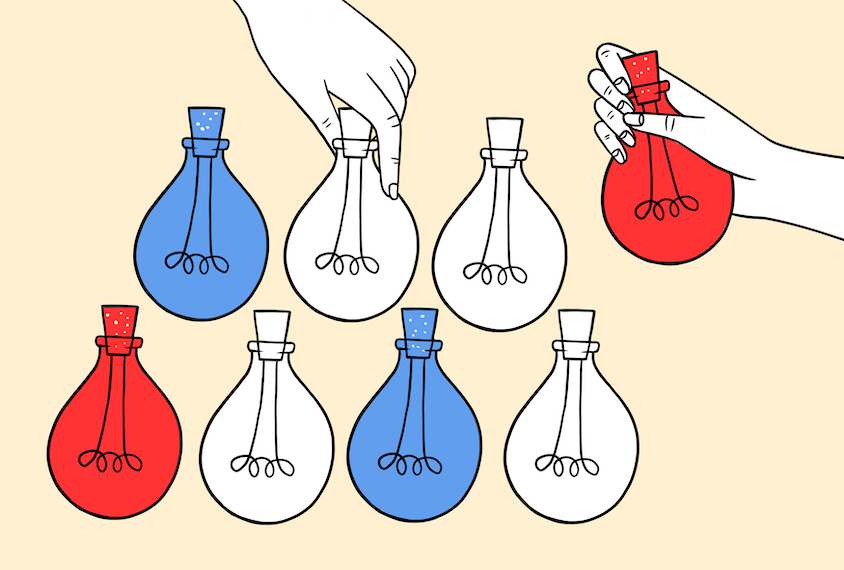A March Nature paper created a stir for suggesting that many neuroimaging studies are too small to reliably link brain structure and function to behavior — a cornerstone of autism research. In Spectrum’s coverage of the study, lead investigator Damien Fair pointed out that publishing bias against null results confounds the problem: Small, underpowered studies may be the most likely to report a finding, and thus are more likely to be published than larger studies with negative and likely more accurate results.
It’s another demonstration of why we give space to negative results and replications here — making sure they “see the light of day,” as Fair put it. Here is the latest roundup; if you’re participating in the International Society for Autism Research (INSAR) annual meeting next month and spot any such findings among the abstracts, send ’em my way at [email protected].
Missed transfer:
Researchers and clinicians have long noted that autistic people may not transfer skills learned in one setting to another, meaning advances a person makes in therapy might not help in, say, a classroom. A new study tested whether an adaptation of the Pediatric Autism Community Therapy (PACT), which appears to improve communication between autistic children and their parents in clinics, could also boost their skills at home and in school. The researchers — two of whom created PACT — gave 127 children aged 2 to 11 treatment as usual, while 122 received the same, plus a generalized form of PACT, for six months. Children who received PACT-Generalized did not improve any more than children without the additional treatment on measures of autism traits or social-communication skills, though they did show fewer disruptive behaviors both at home and in school — findings study investigator Tony Charman called “sobering.”
Sobering (disappointing) #autism early intervention trial https://t.co/vUsBgT6P2s Jonathan Green @richardaemsley @LeadbitterKathy many others. Caution needed in assuming that changing delivery methods + context will preserve an original intervention efficacy for autistic children pic.twitter.com/nIM9QcynN3
— Tony Charman (@TonyASDorAFC) March 18, 2022
The findings were published in The Lancet Psychiatry on 1 April.
Shape focus:
Autism may begin in utero, but few techniques can flag the condition during the earliest years of life. That said, testing a child’s preference for social versus geometric images may work, according to a new validation of the eye-tracking “GeoPref Test.” A subset of autistic toddlers focus largely on geometric images during the test and have increased cognitive, language and social challenges, a 2015 study of 334 toddlers found. Now, the same researchers report similar findings in a group of 1,863 toddlers: Those with autism spend more time looking at geometric images than their siblings without autism or unrelated controls do, and among autistic toddlers — but not other children — the percent of time gazing at the shapes correlates with autism trait severity. The test may be most useful between 12 and 39 months of age, the authors note. At 40 months, non-autistic children, too, start to show more interest in the shape images.
The findings were published in Scientific Reports in March.
Et al.:
- Across four studies, autistic people show neither enhancements nor impairments in intuitive or deliberative thinking. Journal of Psychopathology and Clinical Science
- Antipsychotic use during pregnancy does not increase the chances of a child having a neurodevelopmental condition, with the possible exception of aripiprazole, a drug commonly prescribed to autistic children. JAMA Internal Medicine
- Autistic children are not at an increased risk of fever or a visit to the emergency room after being vaccinated against measles or whooping cough, according to a study of nearly 2 million children in the United States. Vaccine
- None of a group of 58 drugs and dietary supplements can be recommended for treating core autism traits, based on current evidence from randomized controlled trials. Molecular Autism
- Common classroom behaviors that autistic children show, such as hand-flapping or rocking, don’t bother non-autistic children, though they may interpret looking away from a teacher as disrespectful. Social Development
- Children and adolescents with attention deficit hyperactivity disorder do equally well on medication regardless of whether they also have autism. Journal of Neurodevelopmental Disorders
- Autistic children raised in bilingual English-Spanish households have similar language skills to their monolingual peers, according to a study that echoes previous findings showing bilingualism is not harmful to language development in children with autism. Journal of Autism and Developmental Disorders





